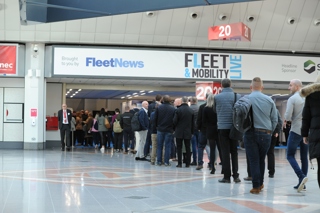It is not enough to simply record mileages – companies need to audit mileage claims to ensure records are accurate.
Aside from spot-checking claims on a regular basis using a route planner, Paul Jackson advises carrying out two checks to see how accurate records are:
1) See how many mileage claims have a zero at the end. If it’s more than 20% then employees are probably rounding their mileages,” Jackson says.
2) Look at fuel card spend and divide it by the mileage of a recently-returned vehicle. “See if the figure is realistic, taking into account the vehicle mpg.”
If inaccuracies are found it is important to act on them.
“One firm had a spreadsheet of mileages and audited it but the problem was they then didn’t do anything when they found inaccurate claims,” Jackson says. “It was fined £700,000.”
If you find inaccuracies you should get the individual to resubmit mileages and make a further reimbursement to the company, according to Nick Davies.
Educating drivers about what constitutes a business mile is important too.
It is usually part of a line manager’s job to check mileages when they sign the expense claim.
However, it may be easier for a third party to take on the administration burden and to challenge inaccurate mileage claims.
Three ways to capture mileage
Mileage capture systems
Automated system where drivers log-in, verify their vehicle’s details, enter ‘from’ and ‘to’ postcodes and the reason for the journey.
Drivers also record their odometer reading which enables the system to calculate private mileage and the driver to reimburse the company for their private mileage if they are using a fuel card. Drivers can also provide mileages by text or phone.
Providers include: TMC, Midas FMS and Vertivia. Some fuel card providers, fleet management software companies and leasing companies also offer mileage capture systems.
Most leasing companies white label existing mileage capture systems although some have an in-house system – Zenith has created its own online mileage capture system, MyMiles, for example.
Pros:
- More sophisticated than a spreadsheet
- Reduced admin burden
- Providers claim it is possible to reduce mileage by up to a quarter due to accurate recording of mileages
- Can switch to drivers reimbursing the company at actual pence per mile rather than advisory fuel rates
- Systems typically also incorporate duty of care checks for grey fleet drivers
Cons:
- Typically costs around £1 per driver per month which could make it expensive for a large fleet
- Still need to perform checks unless you pay an additional service charge for the provider to audit mileages
Spreadsheet
As a minimum, companies should record mileages on a spreadsheet.
Pro:
- Cheapest option
Cons:
- Not adequate unless someone performs spot checks (see ‘Performing an audit’ panel)
- Time-consuming
Telematics
On-board device that tracks a vehicle’s mileage. Typically requires drivers to verify at the start of the journey whether it is a private or business journey.
Can still see how many private miles have been done, but not where a driver has been.
Providers include: Trimble, Navman Wireless, Quartix, Tom Tom Business Solutions, Ctrack and ALD Automotive.
Pros:
- Accurate mileage, particularly if the telematics system plugs into the vehicle’s CAN-bus system Can save fuel by ensuring vans are not being used at weekends
- Sophisticated telematics systems will bring other benefits such as allowing companies to identify which drivers are speeding, braking and accelerating harshly and may require training. It can also allow better route planning and may help recover stolen vehicles
Cons:
- Most expensive option although providers typically estimate a payback period of six months to a year
- Possible resistance from drivers about being monitored
- Typically used in vans rather than cars
- Doesn’t record a journey’s purpose
-
Reports will still need to be analysed
- If a tax inspector picked through your mileage records, would they be satisfactory? Click here to find out
- Click here for mileage capture case study





















Login to comment
Comments
No comments have been made yet.